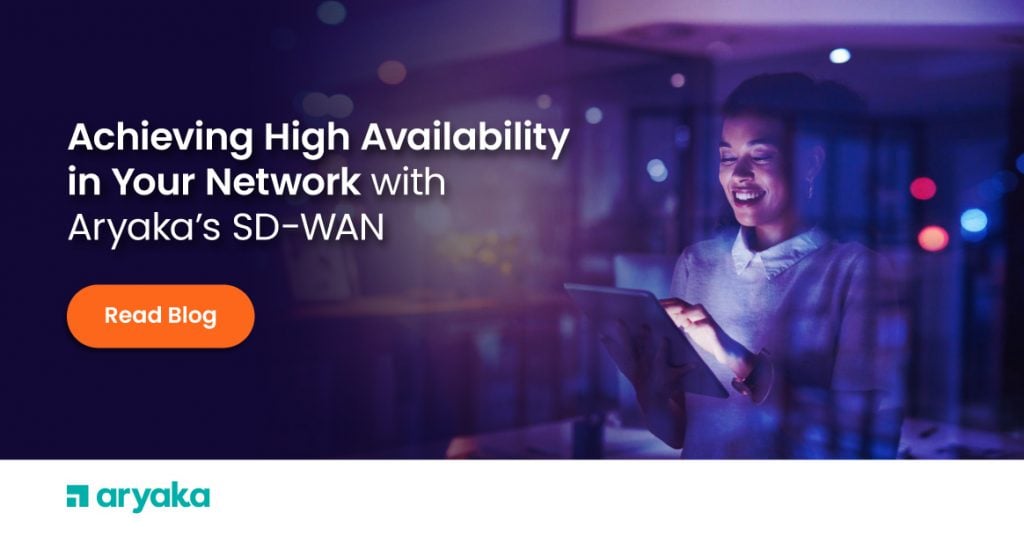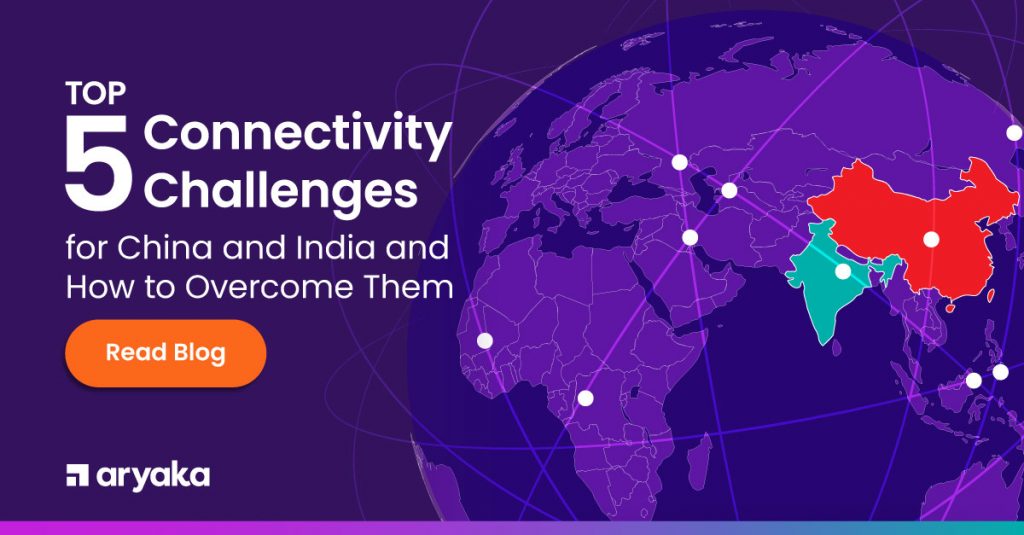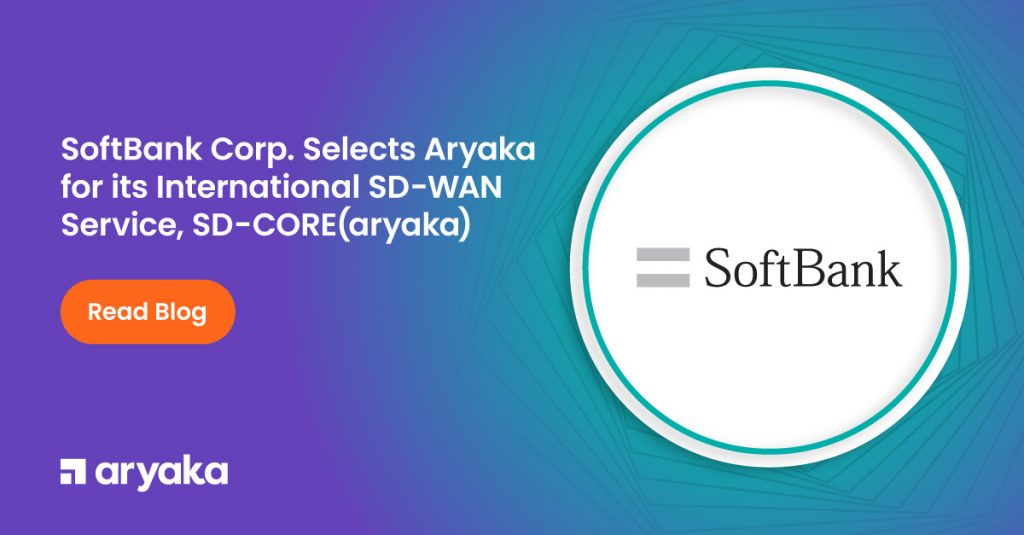Embracing DevOps with Aryaka Cloud-First WAN
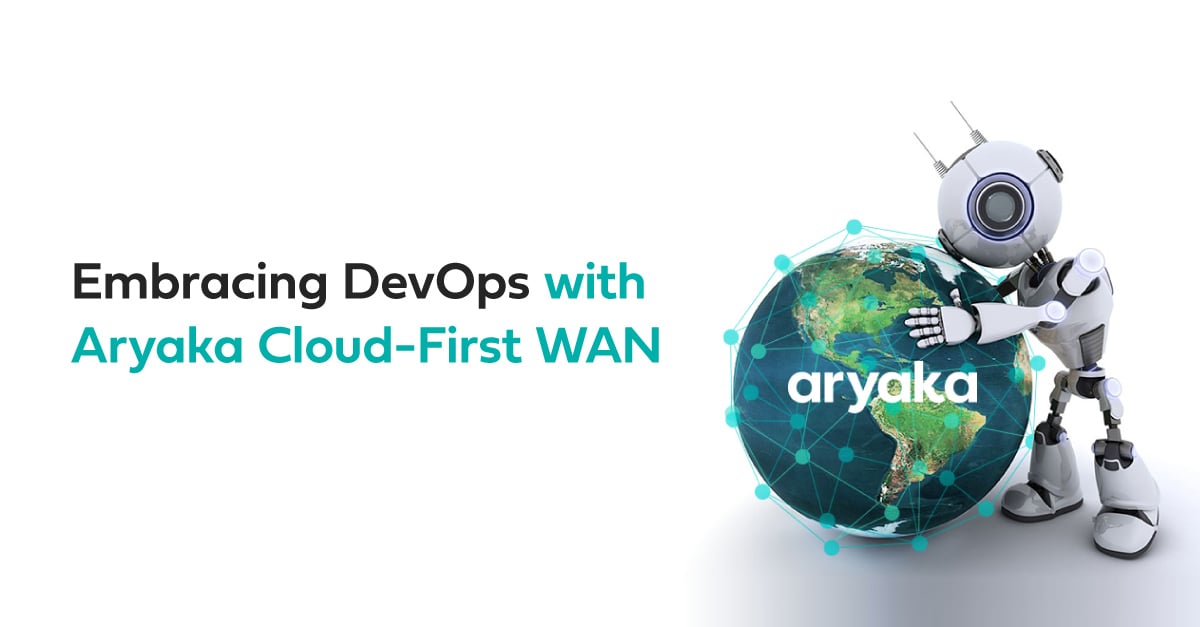
In a previous blog, I wrote about network engineers playing second fiddles (never mind that I mentioned Leonard Bernstein’s New York and Vienna Philharmonics!) and if you check my LinkedIn, it got me some scorn from some contacts (we’re still friends). A healthy debate ensued, and it was conceded that network engineers must embrace “NetOps” patterns in this Cloud-First era we are in. But to me, the fact we try to rename an IT discipline as we apply it to networking (DevOps somehow needs to become NetOps) shows that in networking we still think we are different. I categorically dispute that networking is different, and hence the faster we adopt DevOps (instead of NetOps) models, the better off we are. Devops rules the Cloud-First application and infrastructure environment, hence the network has to follow suit.
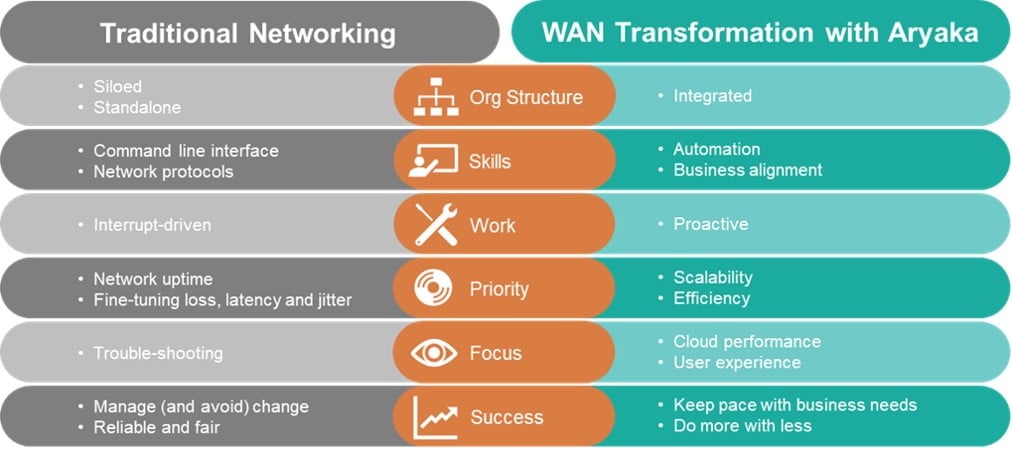
Here’s the thing about NetOps: whenever it comes up, the focus is on network programmability with Python, configuration automation or policy definition. Technical terms dominate the NetOps discussion. The DevOps discussion, on the other hand, focuses on business transformation, culture and philosophy. NetOps is happening – and that’s great – but the real networking game changer would be to elevate the discussion and adopt a true DevOps philosophy. To do that, networking professionals need to lead with business intent and culture, first and foremost – not technology tools.
Let us quickly revisit the history of application computing and how it led to DevOps. Then, as a network engineer, you’ll have to grudgingly admit there are striking familiarities there, and that we are mirroring the exact same trajectory, and will surely arrive at the same result: DevOps. In the beginning, there was iron. In the application world, it went from mainframes to servers. You had to lovingly care for your pets (aka servers): install them, configure them, patch their OS while making sure it stayed compatible with the application or applications you ran on it, manually upgrade the CPU or memory or drive when performance started to degrade. Then came virtualization. Suddenly, the “power of abstraction” happened (check Barbara Liskov’s legendary lecture), and you could spend more time innovating in code and less time taking care of server issues. This separation enabled as-a-Service models, and now we see things like serverless computing, infrastructure as code, etc. “Cattle, not pets” is one of the catchphrases when it comes to an application infrastructure that between containers and orchestration has become completely abstracted. As a Dev(eloper), you just push your code to the orchestration, you want it to roll out very quickly and at the required scale so that your users have a great user experience. But you don’t care where and how it happens, that’s up to Op(eration)s to figure out. Put both things together: DevOps creates a culture that drives innovation and business results.
In networking, we must admit that we’re still caring for our pets: routers, switches and – yes, I have to say it – Do-It-Yourself SD-WAN. Let’s take a look at the history of the enterprise WAN: When I joined the industry, we were rolling out ATM infrastructures. Then came IP routers, and that was fun. Then we started to integrate all sorts of applications in the router OS, like VoIP, security functions and many more. Those ‘pets’ became very high maintenance and yet had the life expectancy of a hamster. Every two to three years or so, you seemed to need some major hardware upgrade – bigger CPUs, faster interfaces, new switch fabric. You name it. Some people in the network world peeked over the fence with some envy at what the application world had accomplished with virtualization, and SDN visionaries started to talk about network abstractions. Network virtualization started to happen. The vast majority of SD-WANs are built as a virtual overlay. It’s great because that overlay is quite agile, unlike the underlay physical network infrastructure onto which it relies to deliver business-level SLAs (I wrote about the overlay-underlay quandary here). And yes, zero touch provisioning exists. But ask people that have implemented a global Do-It-Yourself SD-WAN if it was as easy as pushing out code for an application developer. It certainly is not (Network World article link)! There are several design guides that are several hundred pages long once you check the other documentation that the design guide refers to. The policies you have to define on Day 0 are quite complex, and you better get them right. Oh and you’ll still need MPLS for business critical applications, and in many cases, you’ll have to procure those links yourself across different countries and patch it all together yourself.
Back to DevOps: it became possible because of X-as-a-Service delivery models. Which is exactly what Aryaka does for networking. I like to call it routerless networking, borrowing it from serverless computing to make a point. Forget about configuration and constant tweaking. Never have a router vendor salesperson tell you that there’s new, much better hardware out and there’s a special promotion. Deliver on straight-forward business results, do not worry about defining complex network policies, nor about how to deliver SLAs between administrative boundaries, nor about constantly fine-tuning your network to keep up with ever-changing IaaS and SaaS traffic loads. Aryaka simply resolves your business intent: tell us where your sites are, what redundancy you need, what your top apps are, how you want to prioritize them – and see the network you envisioned magically materialize within 48 hours or less. And not only that, but also see your network-as-a-service constantly adapt to your changing business needs. Aryaka constantly processes and monitors the data of its Global Layer-2 network as well as all the last mile links connecting to the core network to detect macro trends and provide customers with constant optimization options.
It does take a big cultural change, yes. DevOps is a new philosophy and it will inevitably come to rule in networking as well. Aryaka was built as a Cloud-First WAN in order to bring the DevOps culture to networking: a new way of globally connecting your global enterprise with a cloud-first enterprise WAN that delivers on agility and business results. Over 800 enterprises have joined us. Why don’t you join us for a demo of our SmartServices portfolio?
- Accelerate CAD/CAM Performance
- Improve Zoom Conferencing Performance
- Calypso Embraces a SaaS-first Strategy
- CallisonRTKL Transforms their WAN
- Kleinfelder Improves Application Performance
- Teradyne Transforms their WAN
- SAP web application performance
- Kleinfelder Improves Application Performance
- Industrial Manufacturing Company Transforms WAN




